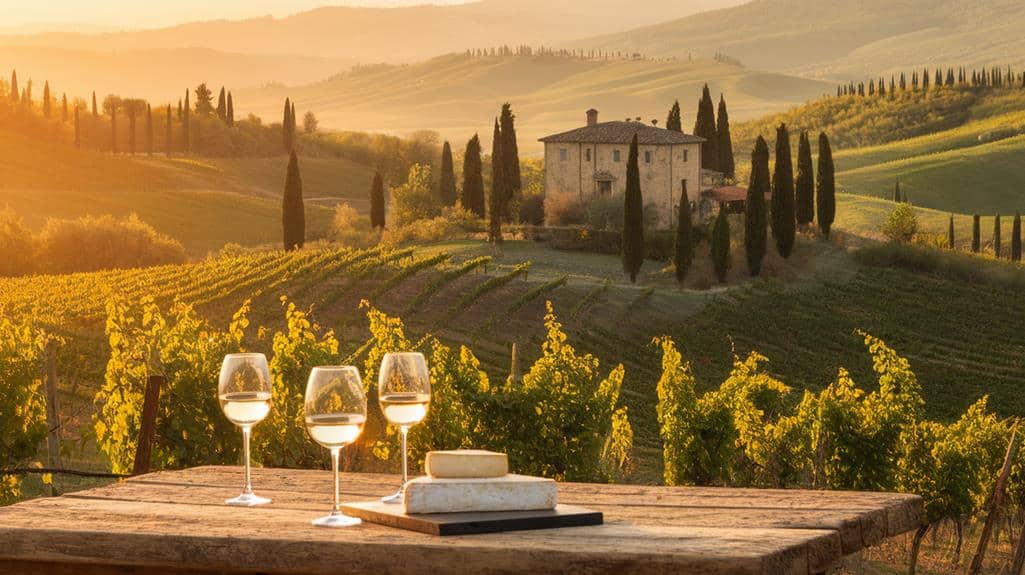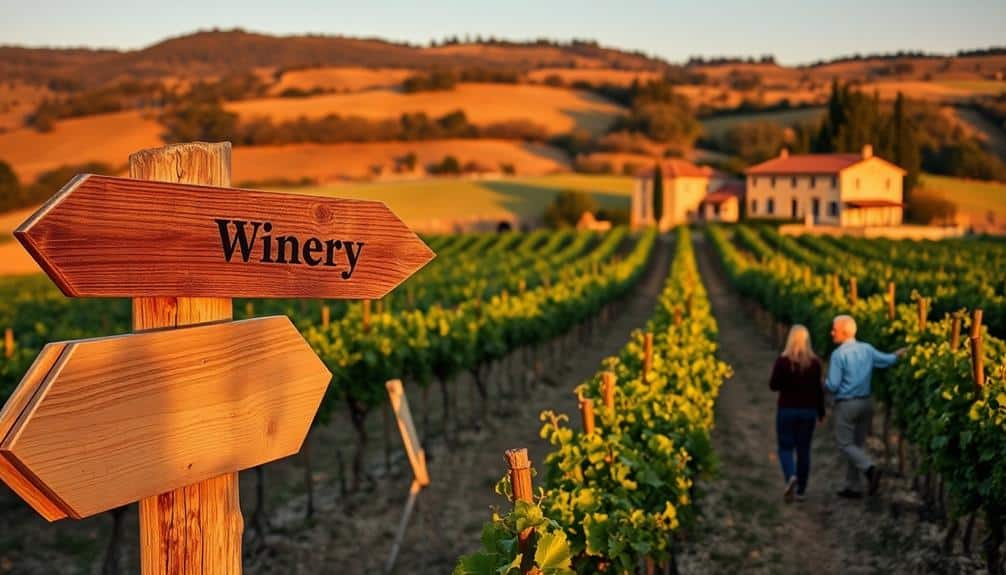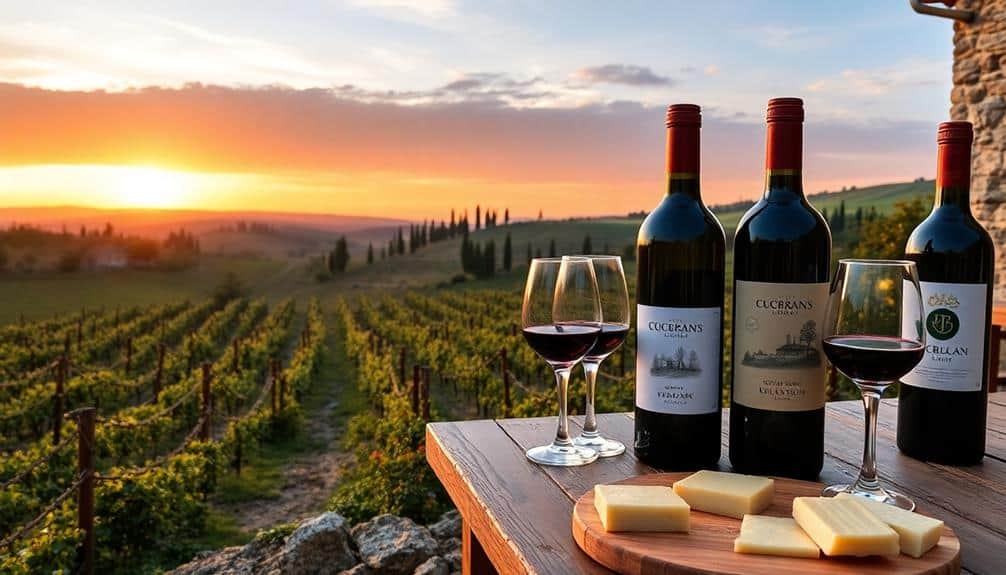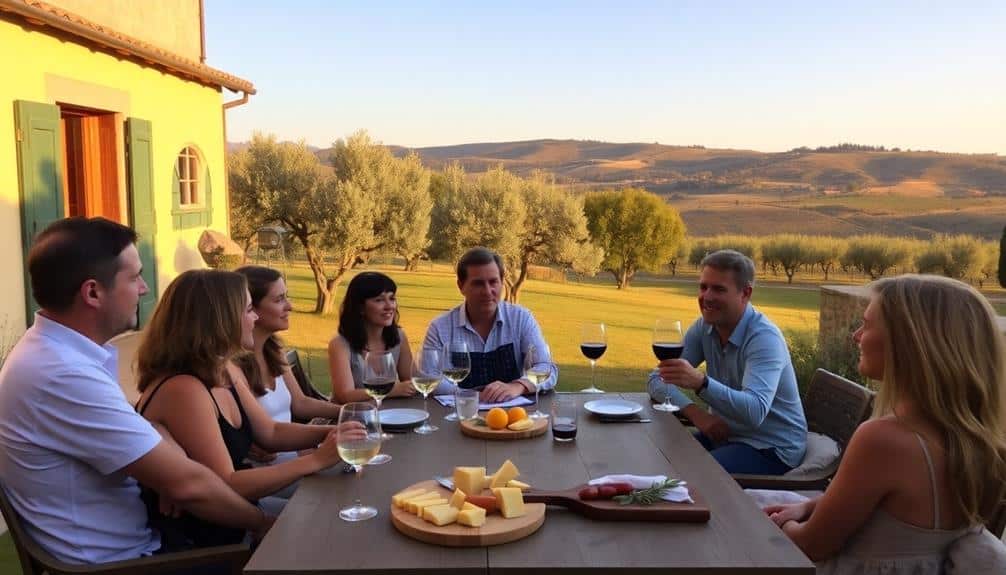
Sip Like a Local: 3 Tuscan Wine Tour Tips
To sip like a local in Tuscany, prioritize small, family-run wineries for authentic experiences and intimate connections with winemakers. Venture beyond Chianti to regions like Bolgheri, Montepulciano, and Montalcino, where you'll discover lesser-known but exceptional wines. Embrace slow-paced tastings, allowing yourself ample time to savor each wine's nuances and engage with sommeliers or winemakers. Plan for extended visits, as guided tastings can last up to two hours, providing in-depth information about the wines and their production. Remember to make advance reservations, as these smaller operations often require them. By following these tips, you'll gain a deeper appreciation for Tuscan wines and the local wine culture.
In a Nutshell
- Choose small, family-run wineries for authentic experiences and connections with winemakers.
- Explore regions beyond Chianti, like Bolgheri, Montepulciano, Montalcino, and San Gimignano.
- Embrace slow-paced tastings to fully appreciate the nuances of each wine.
- Make advance reservations for smaller wineries, as they often have limited availability.
- Engage with sommeliers or winemakers to deepen your understanding and appreciation of Tuscan wines.
Choose Small, Family-Run Wineries

When planning your Tuscan wine tour, opt for small, family-run wineries instead of large commercial operations. These intimate establishments offer a more authentic and personalized experience, allowing you to connect with the winemakers and learn about their craft firsthand. You'll often find that these smaller wineries produce limited quantities of high-quality, artisanal wines that aren't widely available elsewhere. While exploring Tuscany, consider using a travel backpack for convenience and mobility as you visit different wineries and vineyards.
To discover these hidden gems, research local recommendations or consult with a knowledgeable tour guide. Many family-run wineries require advance reservations, so plan accordingly. During your visit, you'll likely tour the vineyards, cellar, and production facilities, gaining insight into traditional winemaking techniques. Don't hesitate to ask questions about grape varieties, aging processes, and food pairings. These smaller operations typically offer more intimate tastings, allowing you to savor each wine without feeling rushed.
Explore Beyond Chianti

While Chianti is certainly Tuscany's most famous wine, there's a whole world of exceptional wines to discover beyond this iconic region. Venture into the coastal area of Bolgheri, known for its Super Tuscan blends that combine international grape varieties with local Sangiovese. Don't overlook Montepulciano, home to the rich, full-bodied Vino Nobile di Montepulciano, or Montalcino, where you'll find the prestigious Brunello di Montalcino. For white wine enthusiasts, head to San Gimignano to sample the crisp Vernaccia di San Gimignano. These lesser-known regions often offer more intimate tasting experiences and the opportunity to discover hidden gems. When planning your itinerary, consider dedicating at least one day to exploring these alternative wine areas. You'll gain a thorough understanding of Tuscan viticulture and potentially find new favorites to add to your cellar. To enhance your wine tour experience, consider consulting travel guides that provide in-depth information about Tuscan wine regions and local tasting customs.
Embrace Slow-Paced Tastings

Savoring Tuscan wines requires more than just a quick sip and nod. To truly appreciate the region's vintages, you'll need to embrace a slower pace during tastings. Plan for extended visits at each winery, allowing ample time to explore the nuances of each wine. Many Tuscan wineries offer guided tastings that can last up to two hours, providing in-depth information on terroir, production methods, and flavor profiles. Don't rush through your glasses; instead, take the time to observe the wine's color, swirl it to release aromas, and let it linger on your palate. Like memory foam pillows that conform to your body, Tuscan wines need time to reveal their full character and complexity. This approach allows you to fully experience the wine's unique qualities and develop a deeper appreciation for its subtleties. Engage with the sommelier or winemaker, asking questions about the wine's characteristics and pairing suggestions. This unhurried approach will enhance your understanding and appreciation of Tuscan wines, allowing you to develop a more refined palate and deeper connection to the region's viticultural heritage.
Frequently Asked Questions
What's the Best Time of Year for a Tuscan Wine Tour?
You'll find the best time for a Tuscan wine tour is during the harvest season, typically from late September to early October. Imagine yourself strolling through sun-drenched vineyards, witnessing the grape picking firsthand. The weather's pleasantly warm, and you'll experience the region's bustling energy. Spring (April to May) is another excellent option, with mild temperatures and blooming landscapes. However, you'll want to avoid August, as it's crowded with tourists and many wineries close for holidays.
Are There Any Age Restrictions for Wine Tastings in Tuscany?
You'll find that most wineries in Tuscany don't enforce strict age restrictions for wine tastings. However, Italy's legal drinking age is 18, so you must be at least this old to participate fully. Some establishments may allow younger visitors to join tours or taste non-alcoholic products. It's advisable to check with specific wineries beforehand, as policies can vary. Remember, responsible drinking is encouraged, and you're expected to consume in moderation during tastings.
How Much Should I Expect to Spend on a Typical Wine Tour?
As you commence your Tuscan wine adventure, expect to uncork a range of prices for tours. You'll typically spend between €50-€200 per person for a day tour, depending on the experience's length, exclusivity, and included amenities. Half-day tours often cost €50-€100, while full-day excursions with multiple winery visits and lunch can reach €150-€200. Luxury, private tours may exceed €300 per person. Always check what's included, such as transportation, tastings, and meals, to gauge the value.
Can I Ship Wine Purchases Back to My Home Country?
Shipping wine purchases back to your home country can be complex due to varying regulations. You'll need to check your destination country's import laws, as some prohibit or restrict alcohol imports. Many wineries offer international shipping services, but costs can be high. Alternatively, you can use specialized wine shipping companies. Be prepared for potential customs duties and taxes upon arrival. It's essential to guarantee appropriate packaging to prevent breakage during transit and comply with airline regulations if hand-carrying bottles.
Are There Vegetarian or Vegan Food Options During Wine Tours?
You'll find that many Tuscan wine tours offer vegetarian and vegan options, as the region's cuisine is rich in plant-based dishes. Most tour operators accommodate dietary restrictions if you inform them in advance. You'll likely encounter vegetarian antipasti, bruschetta, and pasta dishes. Vegan options may include grilled vegetables, bean soups, and fruit-based desserts. However, it's vital to communicate your dietary needs clearly when booking to guarantee a satisfying culinary experience alongside your wine tasting.
